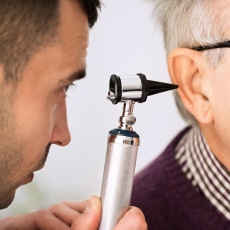
Your ear has three main parts: outer, middle and inner. You use all of them in hearing. Sound waves come in through your outer ear. They reach your middle ear, where they make your eardrum vibrate. The vibrations are transmitted through three tiny bones, called ossicles, in your middle ear. The vibrations travel to your inner ear, a snail-shaped organ. The inner ear makes the nerve impulses that are sent to the brain. Your brain recognizes them as sounds. The inner ear also controls balance.
A variety of conditions may affect your hearing or
- Ear Disorders (National Library of Medicine)... changes in barometric (air) or water pressure. Some ear disorders can result in hearing disorders and deafness.
- Ear Infections (National Library of Medicine)... their ears. The tubes relieve pressure in the ears so that the child can hear again. NIH: National Institute on Deafness and Other Communication Disorders
- Autoimmune Inner Ear Disease (AIED) (Vestibular Disorders Association)Autoimmune Inner Ear Disease is the name used for autoimmune responses targeting the inner ear which often lead to vestibular symptoms.
- Ear Disorders/Clinical Trials ... Ear Disorders
- Perichondritis (Merck & Co., Inc.)Ear Disorders/Specifics
- Ear Canal Infection (Swimmer's Ear) (Merck & Co., Inc.)Ear Disorders/Specifics
- Ear Tumors (Merck & Co., Inc.)Ear Disorders/Specifics
- Vestibular Neuronitis (Merck & Co., Inc.)Ear Disorders/Specifics
- Types of Vestibular Disorders (Vestibular Disorders Association)Balance Problems/Reference Desk ... Balance Problems ... Dizziness and Vertigo/Reference Desk ... Dizziness and Vertigo ... Vestibular Disorders Association
- ... jaw pain or ear pain, including: Dental disorders Ear disorders, such as ear infections Problems with the temporomandibular joint (TMJ) You ...



